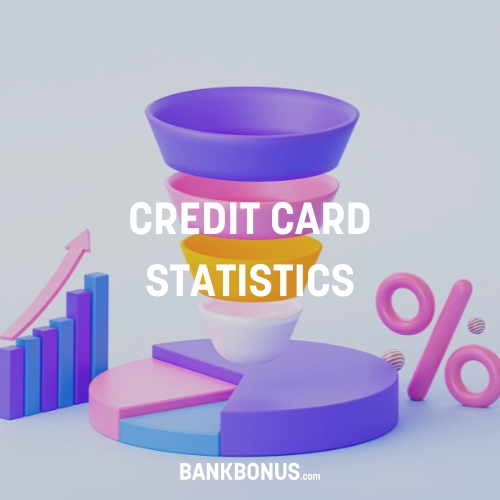The average American credit cardholder has a combined credit card limit (across all credit cards) of a little over $30K according to a recent Experian study. But that figure does not present a full picture.
A consumer’s total credit card limit is determined by several factors. Below, we’ll break down the average credit limit for Americans by age, state, and more.
What Is the Average Credit Limit for Americans?
Your credit limit is the maximum amount of money that a credit card company or lender will let you borrow. A credit card issuer looks at a variety of factors when determining your limit.
As a general rule of thumb, you’ll need good credit for a high credit limit. Typically the higher the credit score, the higher limit you’ll be eligible for.
The average credit card limit for Americans in 2021 was $12,945, with the average credit limit across all cards being over $30K. According to recent Experian data, the average credit card balance was $5,910 in 2022.
Average Credit Limit by Age Group
The average consumer credit limit is correlated to age. Generally, older consumers have higher credit scores and higher credit limits.
According to Experian data, Generation Z consumers have an average $11,290 credit limit at their disposal, whereas Baby Boomers have over $40K. Other generations fall somewhere in between.
By generation, here’s the average credit limit per consumer:
- Generation Z: $11,290
- Millennials: $24,668
- Generation X: $35,994
- Baby Boomers: $40,318
- Silent Generation: $32,379
Average Credit Card Limit by State
There are also visible state trends when it comes to credit limits. Alaska, Washington D.C., and New Jersey residents tend to have the best credit and the highest amount of credit at their disposal. Residents of Indiana, Iowa, and Missouri have the lowest credit limits in the country.
A 2021 TransUnion study reported the average credit card limit (per single credit card) by state. From highest to lowest, here are the results:
| State | Average Credit Limit |
| Alaska | $16,657 |
| District of Columbia | $16,216 |
| New Jersey | $15,977 |
| Connecticut | $15,404 |
| New York | $15,781 |
| Hawaii | $15,126 |
| Texas | $14,638 |
| California | $14,522 |
| Washington | $13,423 |
| Massachusetts | $13,582 |
| Florida | $14,361 |
| Colorado | $12,824 |
| Virginia | $14,106 |
| Illinois | $13,795 |
| Maryland | $13,912 |
| Wyoming | $13,190 |
| Kansas | $13,289 |
| New Hampshire | $12,625 |
| Nevada | $13,550 |
| Montana | $12,555 |
| Georgia | $13,319 |
| Rhode Island | $12,679 |
| Oklahoma | $13,352 |
| Delaware | $13,241 |
| North Carolina | $12,820 |
| North Dakota | $12,422 |
| Arizona | $12,470 |
| Oregon | $11,870 |
| South Carolina | $12,638 |
| Vermont | $11,671 |
| New Mexico | $12,475 |
| Tennessee | $12,469 |
| Louisiana | $12,583 |
| Pennsylvania | $12,736 |
| Michigan | $11,851 |
| Utah | $11,809 |
| Ohio | $12,130 |
| Missouri | $12,038 |
| Alabama | $12,466 |
| Nebraska | $12,044 |
| Minnesota | $11,292 |
| Maine | $11,698 |
| South Dakota | $11,633 |
| West Virginia | $12,176 |
| Arkansas | $11,896 |
| Wisconsin | $11,221 |
| Idaho | $10,991 |
| Kentucky | $11,716 |
| Indiana | $11,118 |
| Iowa | $10,824 |
| Mississippi | $11,055 |
Why Is Your Credit Limit Important?
Your credit limit is important because it dictates how your creditworthiness is perceived by banks and other lenders. More directly, your credit determines how much money you can spend on your charge card or the amount of revolving credit you can borrow.
A higher credit limit can make it easier to spend money and manage your personal finances. For example, if you want to book a vacation online, it will be difficult to do so if your credit limit is only $300. Very few packages will be less than $300. Also, some hotels and car rental companies require you to pay for your reservation specifically with a credit card (not a debit card) as they will use your credit card as a security deposit. Here, having a high enough limit is critical.
In general, a high credit limit gives you more flexibility in managing your money in general. If you have a high credit card limit and a low credit utilization rate, it can help you build credit, qualify for lower interest rates on mortgages, loans, and other credit cards, and give you access to the best credit cards (for consumer perks) like the Blue Cash Preferred Card from American Express or the Chase Sapphire Preferred.
Is a Low Credit Card Limit Bad?
A low credit card limit can be inconvenient, but it’s not necessarily a bad thing. If you have a card limit of only $500, it may be difficult (if not impossible) to make large purchases on your card like electronics, furniture, or travel.
Furthermore, with a lower credit limit, you may be maxing out your credit card more frequently, increasing your credit utilization ratio.
For some consumers though, a low credit card limit is still a positive because they have a card that enables them to build credit or repair their credit.
How Do Issuers Decide Credit Limits?
Credit issuers use data from your consumer credit report and your account history with their company to determine your borrower credit limit.
Factors they take into consideration include:
- Payment history
- Defaults or delinquencies
- Credit utilization
- Length of credit history
- Monthly income
- Monthly bills
- Recent hard inquiries
Payment History
On-time payment history is a major driver in what your credit limit will be. In fact, your payment history makes up the highest percentage of your credit score. Having a good record of on-time payments is one of the most important factors. A clean history will give you access to the best credit card accounts with the highest credit limits.
Defaults or Delinquencies
Defaults or delinquencies are a major kicker when it comes to driving down your spending limit.
Here’s why. Just one late payment reported to your credit bureau could lower your FICO score by up to 180 points.
A significant drop in your credit score could lead a card issuer to lower your card limit–even if you’ve maintained good account history–which can, in turn, lower your credit score even further.
If you have missed a payment or two, don’t despair. You can clean up bad credit or spotty credit by getting your payment history back on track and avoiding defaults or delinquencies.
If you’re in danger of defaulting–for the first time or the fifteenth–call your credit card company and talk to a representative. Banks are generally willing to work with you. They could potentially extend a due date, lower the minimum payment owed, or enable you to skip one or more payments during times of financial hardship.
Credit Utilization
Credit card utilization refers to the amount of money you owe (credit card debt or outstanding balance, consumer loans, and other revolving lines of credit) relative to your total credit limit.
Card issuers like Citi will consider your total utilization rate across all of your lines of revolving credit. In general, you should aim to keep your credit utilization at 30 percent across all of your credit cards.
To reach this credit utilization ratio, take the total amount of your debts and divide it by the total available credit you have. Here are a few scenarios to illustrate the point.
- Good: If you have $3,000 charged to your credit cards and a $10,000 total available limit, your utilization ratio would be 30%.
- Less than good: If you have $3,000 charged to your credit cards and a $5,000 total available limit, your utilization ratio would be 60%.
- Not good: If you have $3,000 charged to your credit cards and a $3,000 total available limit, your utilization ratio would be 100% and this is a red flag to lenders. It appears as though you are in a precarious financial situation where you have maxed out all of your credit cards.
If your credit card utilization ratio falls into the “less than good” or “not good” category, there are a few things you can do to remedy this.
- If you know that you have a decent credit score, you could apply for another credit card. In our “not so good” scenario, if you applied for and got a new credit card with a $ 3,000 limit, then your utilization ratio would drop to 50% which would be a big improvement.
- Request an increase in your maximum credit limit. Typically, if you’ve maxed out your card you would not qualify. But if your account is not maxed out, or you’ve reached the ceiling because of an unusually large purchase, you may be able to get the limit raised.
- Pay down the balance as quickly as possible. There are many online jobs or side hustles you can do to earn extra cash each month, to the tune of $100 to $500.
Length of Credit History
Credit card issuers consider the length of your credit history. Typically, the longer the credit history the better — as long as it shows responsible usage of that credit line over an extended period of time.
A high-limit credit card you’ve maintained responsibly for 10 years will benefit your credit much more than a secured credit card you’ve had for 2 months.
Beyond credit card usage history, credit card issuers will also consider how you’ve managed other types of credit and loans, looking for a record of on-time monthly payments.
Monthly Income vs. Expenses
Credit card issuers also consider your debt-to-income ratio. Here, they are examining your monthly income against any monthly expenses, such as your car payment, child support, or rent. Creditors want to know that you’ll be able to pay your bill each month and want a broad understanding of your means. This includes knowing other financial obligations you may have that could make it difficult to manage your credit card debt.
Recent Hard Inquiries
Credit card issuers will also look for any recent hard inquiries on your credit report to evaluate whether or not to offer any credit as well as how much credit to extend. Recent hard inquiries, unfortunately, can be a red flag to potential lenders.
Hard inquiries can indicate you do not have sufficient cash flow to manage your monthly expenses which means you could be a risky borrower. A hard credit pull will impact (drop) your credit score, and as a result, you may be denied a loan or offered a lower credit card limit
In the short term, your credit score can drop by up to 5 points for a hard inquiry. And hard inquiries remain on your credit report for up to 2 years.
These hard pulls aren’t the end of the world. From time to time, even consumers with excellent credit scores will have hard inquiries on their reports for mortgage or loan applications. But you should keep these inquiries to a minimum and only apply for lines of credit when you really need to.
Frequently Asked Questions
How can I get a credit limit increase?
Make sure to maintain your account in excellent standing (on-time payments). This is key; then you can directly request an increase or wait for your card company to automatically raise the limit.
You may be able to get a credit limit increase by calling your credit card company or submitting a request online. With Discover IT cards, for example, it’s simple to request a limit increase directly from your online account management page.
Keep in mind, your card issuer may place a hard inquiry on your credit report as they verify your eligibility.
To avoid any hard pulls, it may be better to find out when your credit card issuer reviews accounts and grants any automatic increase in credit limit. This is typically done every 6 months or every 12 months.
What happens if I go over my credit limit?
Going over your limit should always be avoided, but in this scenario, a couple of different things could happen.
- The transaction could get declined.
- The transaction could go through, but you would have to pay an over-the-limit fee. This fee is typically $35, but the fee cannot exceed the amount by which you went over your limit. (So if you went over your limit by $8, then the fee would be $8).
Creditors are increasingly shying away from the latter practice, however, and are more apt to just decline the purchase.
Does a higher credit limit hurt your score?
According to Chase Bank, in some instances, yes. While typically, it raises your score (as it improves your credit card utilization ratio), it’s not uncommon for a higher credit limit to harm your score.
- A hard pull is often made to grant additional credit, which drops your score in the short term.
- It can negatively impact your ability to get a mortgage or other types of credit. Mortgage lenders, for example, don’t want to see that you have the potential to go into $50K worth of credit card debt when granting you a loan.
- It puts you at potential risk for greater debt. The higher the credit, the more you could spend. Many consumers lack the discipline to live within their means.
Maintaining Positive Credit Accounts
While the average American credit card limit is roughly $30.4K, every consumer is different and the average credit limit is largely correlated to age group. Boomers have an average credit limit of around $40K compared to $11,290 for Generation Z or “Zoomer” consumers.
Don’t worry about getting the highest possible credit card limit, because higher isn’t always better. Many nuances and variables go into your credit limit, including income, savings account balance, other debts, and credit history.
Instead of focusing on increasing your average credit limit, focus on keeping your credit card accounts in good standing, maintaining excellent payment history for all of your secured and unsecured loans, and think about your credit limit in terms of how much you need instead of how much you can get.





Comments are closed.
Comments are closed here.